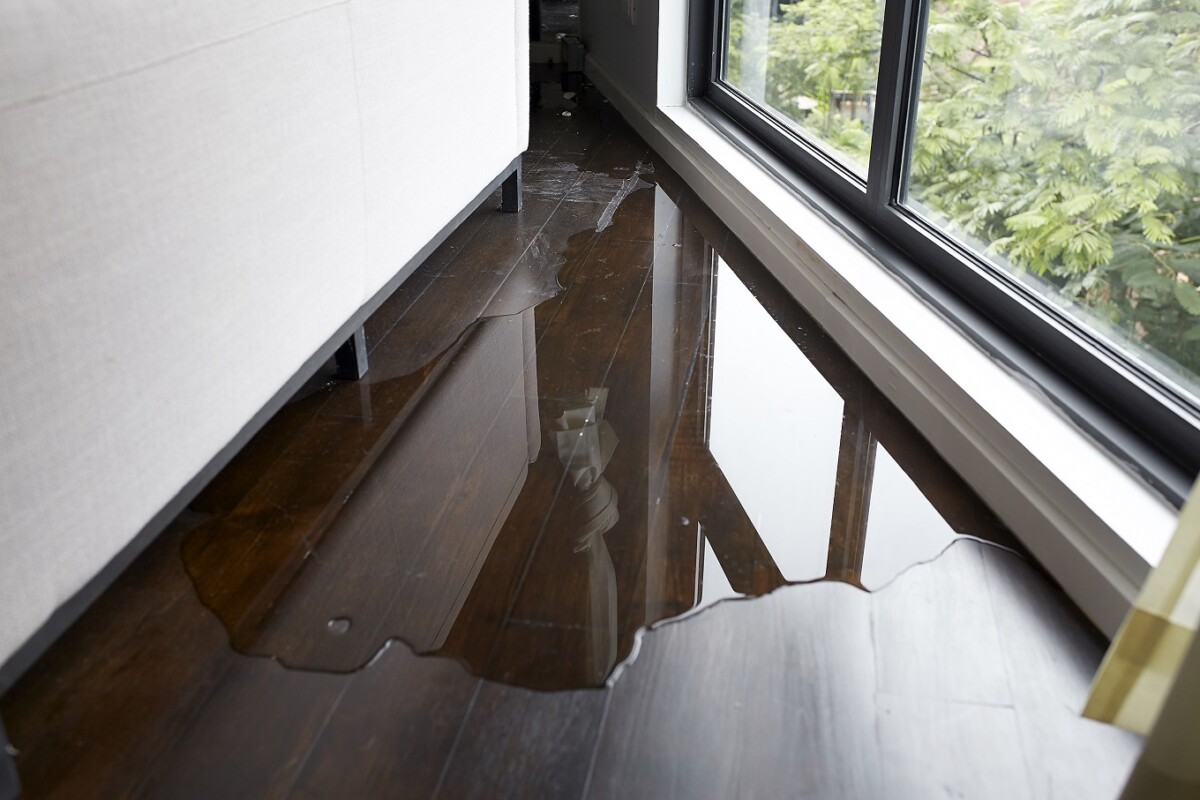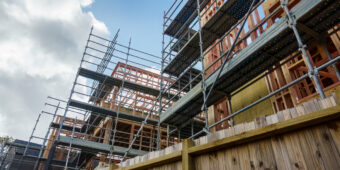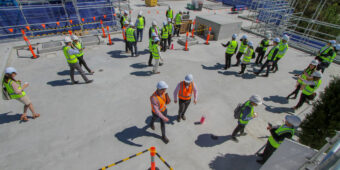(BUILD IT) RIGHT FIRST TIME
22 Sep 2021, Learn, Prove Your Know How, Regulation

The title of 1979 Th’ Dudes classic should be a mantra for the residential construction industry
Every year homeowners spend significant amounts of time and money on house construction. They expect, as a minimum, a building that keeps water out long-term.
The work of MBIE’s Weathertight Services Technical Team puts us in a good position to identify recurring areas of weathertightness failures. It is worth noting that most of these failures are for buildings between 10 and 30 years old and therefore not built in accordance with the current Acceptable Solutions of the New Zealand Building Code.
Here are seven of the most common problems. To illustrate these failures, we have kept our words to a minimum, instead using photos and accompanying text from a building assessor’s reports.
Membrane roofs/gutters, scuppers and decks
These commonly show failures at joints, adherence to other materials or at upturns and downturns of membrane sheets.

Butyl rubber membrane over a small roof.
Inadequate front edge installation with the corner
cut exposing the plywood substrate.
1.Kick-out flashings at wall and roof junctions
The absence of a kick-out flashing allows water to flow behind the cladding.

No kick-out or diverter provision at the bottom end of the apron junction to a fibre-cement cladding. Destructive testing confirms water ingress and timber damage.
2. Thresholds to decks
The junctions between the walls, joinery, balustrades and decks are prone to water ingress due to inadequate threshold heights, folds and corners or cladding proximity to membranes.

Stucco plaster cladding and joinery close
to a tiled deck. Joinery installation issues at the
jamb. Minimal threshold separation allows water uptake into the uncoated, porous bottom edge of the stucco plaster. Maintenance difficulties.
Parapets, balustrades and attachment points
Water entry can cause structural damage to parapets and solid balustrades at either capping or gutter and deck levels due to lack of saddle-flashings, cross fall, expansion joints and plan change direction. Damage to structure can also occur where open balustrades are fixed through membranes, solid balustrades, and walls.


Top fixed stainless-steel handrail penetrates an EIFS clad parapet. There are clear signs of water ingress around the penetration point with the coating cracks indicating moisture movement to the underlying timber framing. The steel bracket-fixed timber post directly penetrates the cladding. This cannot be
made weathertight or be adequately maintained.
Joints and flashings in cladding
These are often inadequate allowing water ingress and damage particularly at horizontal and control joints.

Stucco plaster cladding over rigid backing. Incorrect control joint formation, without separation of mesh and plaster over the joint, leading to movement cracking and water ingress.
Joinery installation
Head, jamb and sill flashings fail to deflect water to the exterior or are non-existent.

Texture-coated fibre-cement cladding. Window head flashings without stop-ends or other means of preventing water ingress. Coating and cladding sheets are in contact with the shoulder of the flashing which allows water uptake to the cladding edges by capillary action. Timber testing reveals visible water staining and a very high moisture reading. No evidence of proprietary waterproofing systems installation to window perimeter.
Ground clearances
Unpaved and paved ground levels are too high, failing to protect either cladding or framing. This requires particular care at garage door openings where driveways are close to floor level for ease of vehicle entry.
The leaky home crisis has given us all a greater understanding of how moisture enters and damages a building. Fortunately, we can now build to prevent, minimise and manage water ingress and egress, enhancing the building’s life and providing homes that are healthy.

A fibre-cement clad timber-framed column and built-up paving resulting in significant damage.
Legislation, building practices and controls have, and are being, updated to help manage the problem. MBIE’s Building Code Update 2021 consultation document proposes options for raising performance standards. At a conservative estimate, this could bring New Zealand’s Code up to comparable international standards, or boldly, above these standards, leading the way whilst simultaneously meeting our energy efficiency and wider climate-change obligations.
Regardless, we must remind ourselves to learn from the past and (build it) right first time.
This article is an excerpt from Codewords Issue 102. Reading Codewords articles that are relevant to your licence class is a mandatory requirement for Licensed Building Practitioners. These questions can be answered through the LBP portal, online on the Under Construction website or recorded on the magazine, then provided at the time of renewal.
Register to earn LBP Points Sign in
1 Comment
Leave a Reply
You must be logged in to post a comment.




ok